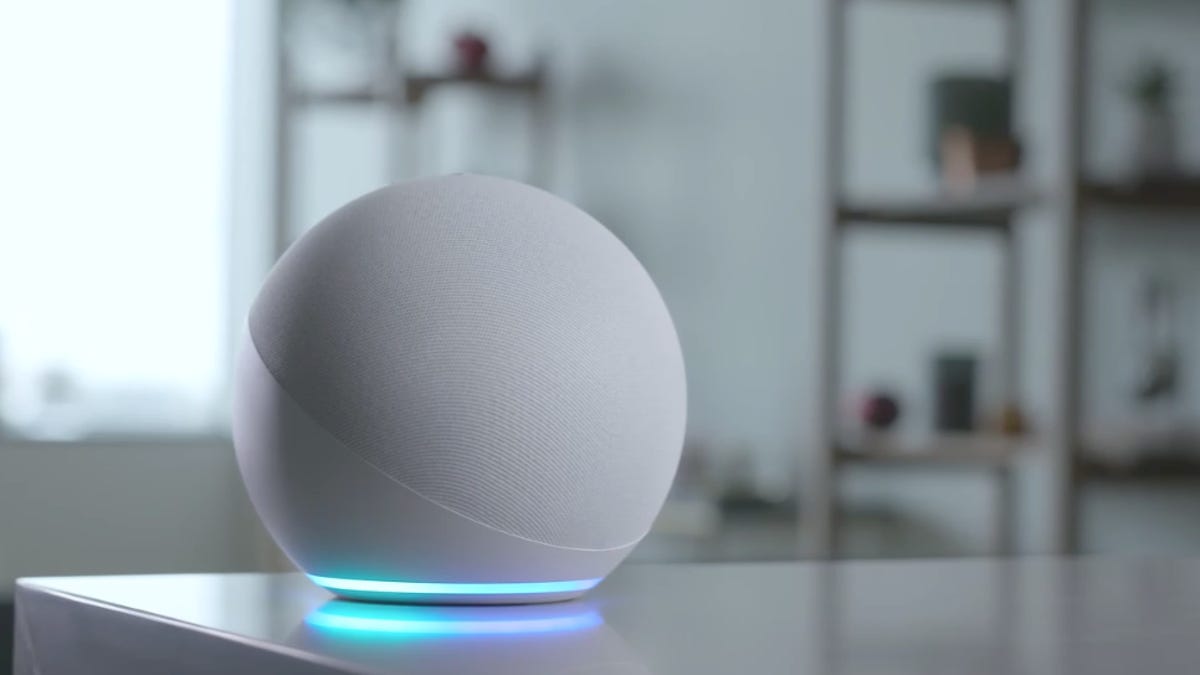 Why You Can Trust CNET
Why You Can Trust CNET Here's how to save money with Amazon's energy dashboard
See how much energy your smart devices are using with the new energy dashboard in the Alexa app.

Amazon's new energy dashboard started rolling out to customers on Monday. Announced at the company's virtual media event in September, the dashboard provides time and energy usage stats on Echo speakers and displays as well as on select Alexa-enabled third-party devices.
Sustainability has been a recurring topic for Amazon CEO Jeff Bezos since he launched The Climate Pledge in 2019. The pledge outlines the tech giant's climate change goals, including plans to reach 100% renewable energy by 2030 and to become net carbon zero by 2040. Amazon also launched a "Climate Pledge Friendly" label for products sold by the online retailer. The products have to meet at least one certification of sustainability, as determined by partners like Rainforest Alliance and Energy Star and Amazon's own Compact by Design certification. Bezos also announced a $10 billion Bezos Earth Fund to address climate change last February and a $2 billion Climate Pledge Fund to combat carbon emissions in June.
Amazon's climate plans have faced some criticism. "It's hypocritical to announce that climate change is the biggest threat to our planet while at the same time boosting the fossil fuel industry by providing advanced computing technologies to the oil and gas industry so that it can discover and drill more oil, more efficiently," Greenpeace USA Senior Campaigner Elizabeth Jardim said in a statement following the announcement of the Bezos Earth Fund.
The energy dashboard is just the latest effort by the company to address its sustainability goals. Since I have assorted Alexa-compatible devices at home, I decided to check out the new energy dashboard. Here's the full list of devices that currently work with the energy dashboard.
How to set up the energy dashboard
OK, first question: How do you find the energy dashboard? Here I'll walk through the steps to find it in the Alexa app and how to configure it.
Step 1: Open the Alexa app
Amazon's smart home energy dashboard is housed in the Alexa app, which is where all of your Echo devices and all of your Alexa-connected products live.
Step 2: Select Devices
Click on the Devices tab on the lower right corner of the app home screen.
Step 3: Click Energy Dashboard
There's a subtle Energy Dashboard option about a third of the way down the Devices page on the left with a little lightning bolt icon (see the first screenshot below). Click it.
You won't see much initially.
Step 4: Time to configure
Once you've opened the energy dashboard, you'll see roughly what's in the second screenshot above. It might look a little different based on the specific devices you have connected in your Alexa app.
I currently have a dozen smart products, ranging from Echo devices to lights and security cameras -- so the app took me straight to a mostly blank page that just said "Lights" at the top. That's because you have to input a little information to start getting energy estimates for your devices. Click Get started to begin.
Keep in mind that the energy dashboard won't track all of your Alexa-app-connected smart devices. In the fourth screenshot it specifies that the dashboard only works for "compatible Alexa-connected devices such as lights, TVs, thermostats, and water heaters..."
Step 5: Add device details
If you already have energy dashboard-compatible devices in your Alexa app, you'll see the average amount of time your lights (or TV or water heater) are on without having to do anything (see the first screenshot below).
But in order to give you energy estimates, the app needs a bit more info. When I clicked on Deck light under my list of compatible devices in the dashboard, it asked me to add wattage info. I wasn't sure of the deck light's wattage at first, so I clicked on Learn more at the bottom of the screen to get to the Help page (see the third screenshot below). The help page provides standard wattage specs for various lights, although you can also visit the specs for your specific device to get the most accurate information.
I followed the same steps for my other smart lights, and the next day I had an estimated total energy reading for my devices.
Input details about your devices to get energy usage estimates.
Is Amazon's energy dashboard helpful?
I'm still in the early stages of testing the energy dashboard, but I find it useful so far. It's similar to the dashboards you see in smart thermostat apps that provide an overview of your usage. This feature is especially helpful if you're surprised by the numbers and are able to make adjustments that don't impact your day-to-day life, but manage to save you a little money and use a little less electricity.
You're just seeing part of your home's energy usage with Amazon's energy dashboard, since it only works with select Alexa-compatible devices, but I'm already seeing benefits. The time averages for my lights were higher than I realized and I've adjusted their on/off schedule to account for it. We'll see if the energy estimates also prove useful over time (it's too early to do anything with them now); I'll check back in with an update later this year.

